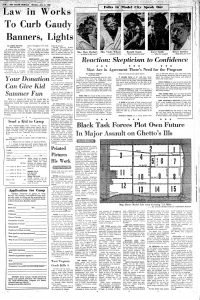Miami-Dade Model City Program
The Model City Program was created under the federal government’s 1966 Cities Demonstration and Metropolitan Development Act. The idea was to concentrate money and effort into blighted neighborhoods to improve the physical conditions and bring in social services. Dade County was one of 63 cities and counties selected from 200 applicants. The “Model Neighborhood Area” was bounded by Northwest 79th Street, the Airport Expressway, Northwest 37th Avenue and Interstate 95. The area had a population of about 100,000, 95 percent black. It had no sewer or water systems and few social services. More than $137 million, mostly federal money, was spent on new housing, sewers, water and drainage systems, the Caleb Center, the Model City Cultural Arts Center and social services programs such as scholarship funds, daycare, job placement and an Emergency Housing Center. While the Model City program did provide much-needed capital improvements in the area, it did little to directly stimulate economic development. For instance, the Model City program provided loans to residents who wanted to renovate their homes but was unable to provide continuous support for those people or generate additional funds to provide maintenance of those homes. After the program, poverty and unemployment still abounded in Model City. Abandoned, boarded up homes dot may area streets. That deterioration plagues the community which — like the 62 other model cities across the nation — was supposed to provide symbols that show America’s ability to help its underprivileged.













































